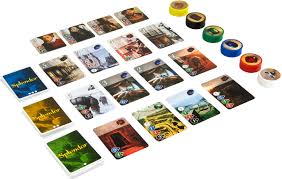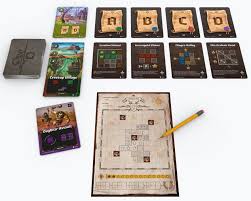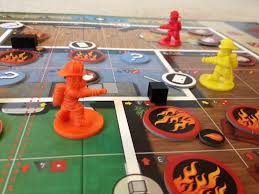Game Mechanics: How to keep players engaged
Last week we discussed game mechanics used in great word games. This week we’ll continue the series by talking about a very important topic: How to keep players engaged.
You’ll see that many of the game mechanics and ideas mentioned in last week’s article, as well as others in the series, have touched on this topic, however, I wanted to go a bit further on this topic, as this is such an important thing to always keep in mind.
First of all, what do we mean when we say we want to keep players engaged?
Well, rather than looking at their phone, staring off into space, or getting easily distracted, we want players to stay focused on the game in front of them and feel compelled to pay attention and enjoy the experience at hand.
So, without further ado let’s look at how to keep players engaged in your game.
Short, Quick Turns or Simultaneous Play
I previously alluded to incorporating quick turns and simultaneous play in previous articles, as it is important to keep your players playing rather than sitting around waiting for their turn to eventually come around. Those long pauses between play are an easy way for players to lose engagement.
While it’s not always possible in all game types to keep turns quick and snappy, if you can do so it will definitely help keep players engaged and improve the flow of your game.
Rather than allowing a player to do 5 actions on their turn, try just allowing them to do one or two actions and limit their options to a small number of available choices.
A great example of this is Splendor, which I already went into great detail on in this article. You do one of four things on your turn, then it passes on to the next player. The best decision isn’t necessarily obvious, but your options are intuitive and quick choices can be made.

When your players are often saying “Oh it’s my turn again?”, you know you’ve got a game that’s moving at a good pace.
High engagement can also be achieved by using simultaneous play. Many examples of this are given in the same article mentioned above, but it essentially boils down to revealing something that is available to everyone and allowing each player to decide exactly how they want to use it on their own board or play area.
One of my favourites in this realm is Cartographers.

A terrain type and shape are revealed (cards have either 2 terrain types and 1 shape or 1 terrain type and 2 shapes), and you must figure out where to best place them in order to score points with the given objectives.
The variation in objectives from game to game makes this a different puzzle every time you play.
Game Mechanics that Give Players Something to Think About
Another way to keep players engaged is by presenting them with something to do when it’s not their turn. This could involve planning, negotiating with other players, or looking at the options available to them and determining the best strategies.
Co-operative games like Flashpoint: Fire Rescue often allow players to take multiple actions on their turn, which can make for less-than-quick turns. However, players remain engaged because they are constantly planning with other players to figure out what the best moves are on each player’s turn and how they should plan ahead together. They have to figure out what is a high priority and what can wait. You only succeed by working together.

(image: acrosstheboardcafe.com)
In a think-y game like Santorini, where you have to figure out a way to build, move, and get your character to the top of a building first, you’re constantly thinking ahead and assessing the board state. You may take a minute or two coming up with the best move, but at the same time, your opponent is trying to figure out your strategy and how to counter or work around it.

It’s much like Chess in that way. You don’t want the game to move too quickly, because you want time to think and make the best move possible. This often works best in a 2-player game, as only one other player is waiting to take their turn, and they have plenty to think about. The board will also not change drastically by the time they get to move again.
Now, if you can incorporate quick turns and something to think about when it’s not your turn (as long as it’s not too onerous or slows down the game), you’ve got a great combination going!
How do you ensure players are highly engaged in your games?
Please share this with me and other readers by leaving a comment.
Next week we’ll discuss how to incentivize players to do the things you want them to do.

3 comments
Bill Murphy
Hi, I love these articles. Now keeping game turns boiled down for only a few actions players can take on a turn usually is a great thing to aim for. I found in a war game we are working on called From The Mist – Battles in Between -, plays at a earlier stage in development didn’t support this. See we limited the players to one action on a turn. It use to be 4, 5 or 6 depending on player order. Instead of cutting the players turns down in time, time increase because player spent time trying to figure out the best 1 action rather supporting more casual play knowing they had a few things they could do. I found this fascinating. We currently have an entirely different system of taking actions that also determine player order, and it is the major loop in the game. Just found this topic of action and player order in particular very interesting.
Joe Slack
Thanks, Bill! Sounds like you’ve discovered some clever things to keep players on their toes!
Why people don’t want to play your game
[…] The more choices a player has, the more likely they will fall into AP (analysis paralysis). The longer one player takes to make a decision, the longer other players will have to wait for their turn, which is something you want to avoid. Quick or simultaneous turns, or at least something for players to strategize while it is not their turn, is something to strive for and something I discussed further in an article about keeping players engaged. […]